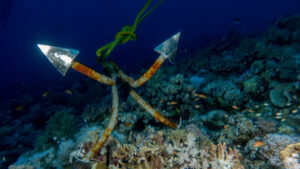Brazilian Critical Minerals’ Ema REE project grows interest amid feasibility study

Potential offtake and non-government debt funding partners are becoming increasingly interested in Ema as DFS work continues. Pic: Getty Images
- BCM’s Ema hydraulic conductivity testing returns mean value double the figure used in scoping study
- ISE field trial extracts over 2000l of pregnant liquor solution successfully, validating its use for REE recovery
- REE offtake interest growing as low-cost project attracts non-government lenders
Special Report: Brazilian Critical Minerals continues to advance its flagship Ema rare earths project in Brazil on multiple fronts as it works to complete the key bankable feasibility study.
One key result comes from recent testing from the wellfield, which returned a mean hydraulic conductivity of 0.27m/day – nearly double the figure used in the scoping study – with peak values as high as 0.65m/day, which significantly enhances confidence in scalability and production efficiency.
Additionally, Brazilian Critical Minerals’ (ASX:BCM) in-situ recovery field trial, which is now in the final phase with the water washing cycle underway, has successfully extracted over 2000l of pregnant liquor solution (PLS).
This confirms strong ISR performance and further validates its use to extract REEs at the project.
The field trial resulted in very rapid decrease of the pH within the clay zone to the target value required to leach rare earths over short distances, and achieved fast reactivity of the magnesium sulphate reagent and high PLS grade.
Environmental approvals are also on track with the company having completed all studies and now preparing to submit them in the coming quarter to keep the project development timeline intact.
Additionally, full support has been secured from the local community, backed by endorsements from senior officials in Apui while land access negotiations are well advanced and nearing completion.
Advancing Ema
Managing director Andrew Reid said the company is advancing multiple work streams aimed at designing, permitting and financing the Ema project.
“The pilot field trial has been a resounding success: we have successfully injected, leached, extracted and precipitated rare earths directly from the ground using in-situ recovery (ISR) methods,” he added.
“Notably, these results have been achieved using magnesium sulphate, positioning Ema as the highest ESG-compliant mining project in the sector.
“The bankable feasibility study has commenced in partnership with Altris Engineering and will cover a comprehensive range of technical and design activities over the next six to nine months. Engagement with regulators on the mine permit application is ongoing and positive.
“Data from the field pilot trial will be incorporated into the final environmental permit submission, which is expected shortly.
“In parallel, BCM is experiencing strong interest from numerous potential offtake partners keen to understand the project’s progress and upcoming deliverables over the next 12 months.”
ISR trial and offtake
The company has now started the final phase of the field pilot trial, which involves the injection of local river water through the mineralised clay horizon.
This is aimed at re-establishing both the background pH and sulphate levels whilst collecting and submitting information to the regulators for assessment.
Additionally, BCM continues to progress discussions for future rare earths offtake agreements.
These discussions now range from intermediate to more advanced stages with interest continuing to grow despite customers and major industry participants remaining non-committal at this time.
The relatively low capital requirements of just US$55m have also led non-government lenders to view Ema as a lower-risk opportunity, especially once technical viability and scalability have been demonstrated through completion of the field pilot trial washing phase and feasibility work.
Such debt funding represents an increasingly attractive pathway for financing Ema, with comparatively low capital intensity and strong project fundamentals.
This approach may involve securing funding from specialist resource funds, private credit providers, or structured finance institutions.
Beyond traditional term loans, non-government debt being reviewed includes mezzanine finance, royalty-backed debt, or project-specific bonds, which can be tailored to align repayment profiles with project cash flows, preserving shareholder equity and minimising dilution.
This article was developed in collaboration with Brazilian Critical Minerals, a Stockhead advertiser at the time of publishing.
This article does not constitute financial product advice. You should consider obtaining independent advice before making any financial decisions.
Related Topics

UNLOCK INSIGHTS
Discover the untold stories of emerging ASX stocks.
Daily news and expert analysis, it's free to subscribe.
By proceeding, you confirm you understand that we handle personal information in accordance with our Privacy Policy.








